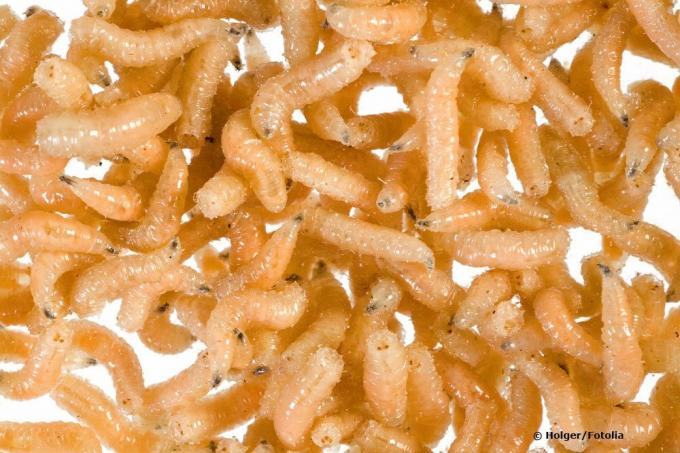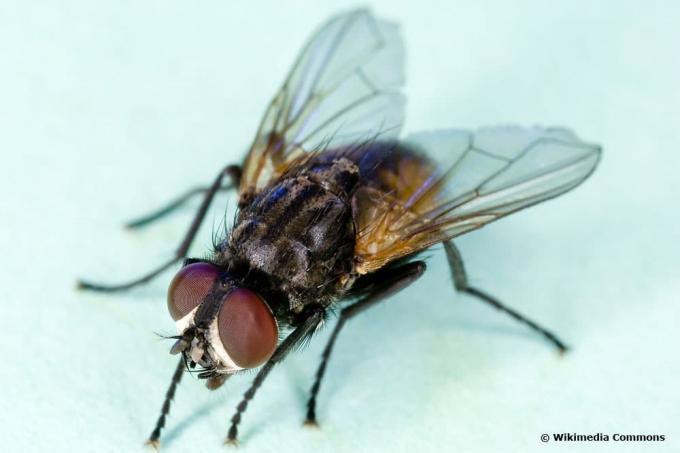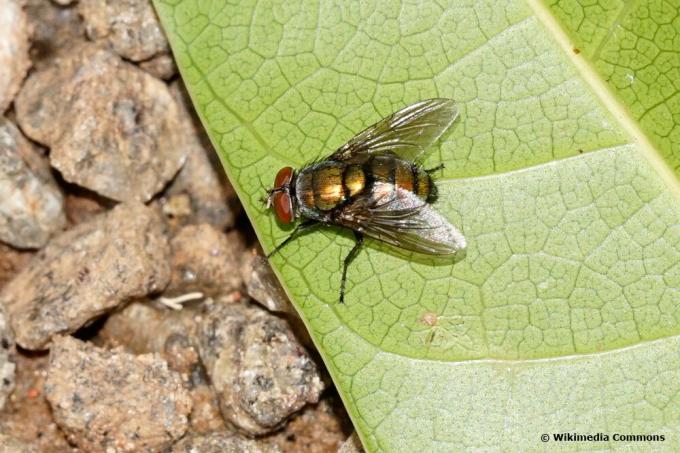
table of contents
- Origin simply explained
- Localize maggot infestation
- Identify kitchen flies
- Common housefly (Musca domestica)
- Blowflies (Calliphoridae)
- Drosophilidae
Out of nowhere, hideous maggots infest the kitchen. Leftovers come to life and the garbage can is teeming with worms. Read here how nasty Pinworms arise with tips on the most common causes.
Origin simply explained
Maggots in the kitchen are the offspring of flies. In technical jargon, a maggot is called a larva. The worms can be recognized by their cream-colored, legless and headless bodies. It is an intermediate form during the development from the egg to the finished, airworthy insect. The creation process takes place in the following steps:

- Time window of formation: spring to autumn (maximum activity in midsummer)
- Mated female fly lays an egg package with up to 150 eggs
- Preferred storage places: organic substances that can decompose, such as rubbish and decaying food
- optimal temperature level: 20 ° -25 ° Celsius (at least 16 ° Celsius)
- Ripening time of the eggs until the maggots hatch: 10 to 46 hours (the warmer, the faster)
- Maturation time from a maggot to an insect: 3 larval stages over a period of 3 to 14 days
Under ideal, humid and warm conditions, female flies lay their egg packets several times at intervals of 3 to 4 days. A cycle is set in motion, as a result of which hundreds of worms are created, which transform into sexually mature flies within a few days and in turn lay eggs.
Localize maggot infestation
Once they have laid their eggs, flies no longer take care of their brood. For this reason, female flies with packets of eggs in their luggage keep an eye out for suitable food sources for hatched larvae in the kitchen. With maggots, putrid materials that have softened as a result of decomposition are at the top of the menu. Pinworms are particularly common in the kitchen at these locations:
- Trash can (also under the lid)
- open food (fruit basket, muesli pack, chocolate box, sugar bowl and the like)
- Dog or cat food bowl
- Drain from sink and dishwasher
- wet sponges and similar cleaning utensils
- Drawers from kitchen cabinets and pantries
- Litter box, bird cage, terrarium
- in wall joints, behind baseboards, in furniture cracks

In principle, all organic, proteinaceous materials are threatened by maggot infestation. Worms prefer to feed on rotten meat, fermenting fruit, and moldy cheese. In the absence of favorite food sources, voracious larvae do not disdain comparable materials, such as compost or the faeces of domestic animals.
Tip: Pinworms in the potting soil of culinary herbs are the larvae of sciarid gnats (Sciaridae). The good news is that female sciarid gnats don't lay their eggs in groceries or trash cans. The maggot infestation does not turn out well for the affected plants because the beasts attack the roots.
Identify kitchen flies
Three types of flies are primarily responsible for maggot infestations in your immediate living environment. Act here according to the motto “know your enemy” in order to identify the culprits in good time and take countermeasures. You should be familiar with these kitchen flies:
Common housefly (Musca domestica)
House flies are 4 to 8 mm long and have a gray body. Red compound eyes and four vertical stripes on the fuselage are their distinguishing marks. Other features are black extremities and a yellowish underside. Two large wings tower over the abdomen and cause an unmistakable hum in flight. In the rest position, the wings are spread at a narrow angle. The larger females place their eggs in groups of 120 to 150 each in rotten food or excrement.

Tip: Where there are no flies, there are no maggots. The best prevention against worms in the kitchen is a close-meshed fly screen on windows and doors. Food stored under a fly hood is out of the reach of brazen female flies looking for a place to lay their eggs.
Blowflies (Calliphoridae)
Blowflies can be recognized at first glance by their metallic, shiny color. The repertoire includes iridescent blue, iridescent green and iridescent gold green. A blow fly is up to 15 mm larger than a house fly. Reddish compound eyes sit on the dark head. The scent of carrion is a magical attraction for blowflies. For this reason, these kitchen flies are the most common culprit when meat remains are contaminated by maggots.

Drosophilidae
Compared to house flies and blow flies, fruit flies are the smallest evil in the kitchen. Numerous middle names, such as vinegar fly, fruit fly and fruit fly, indicate their particular fondness for acidic substances. Of 50 species of fruit flies that occur in Germany, Drosophila melanogaster is primarily making itself unpopular as an annoying kitchen fly because its nasty maggots spoil our appetite for fruit. You can identify fruit flies on a yellowish-brown body about 2.5 mm in size and bright red eyes.



